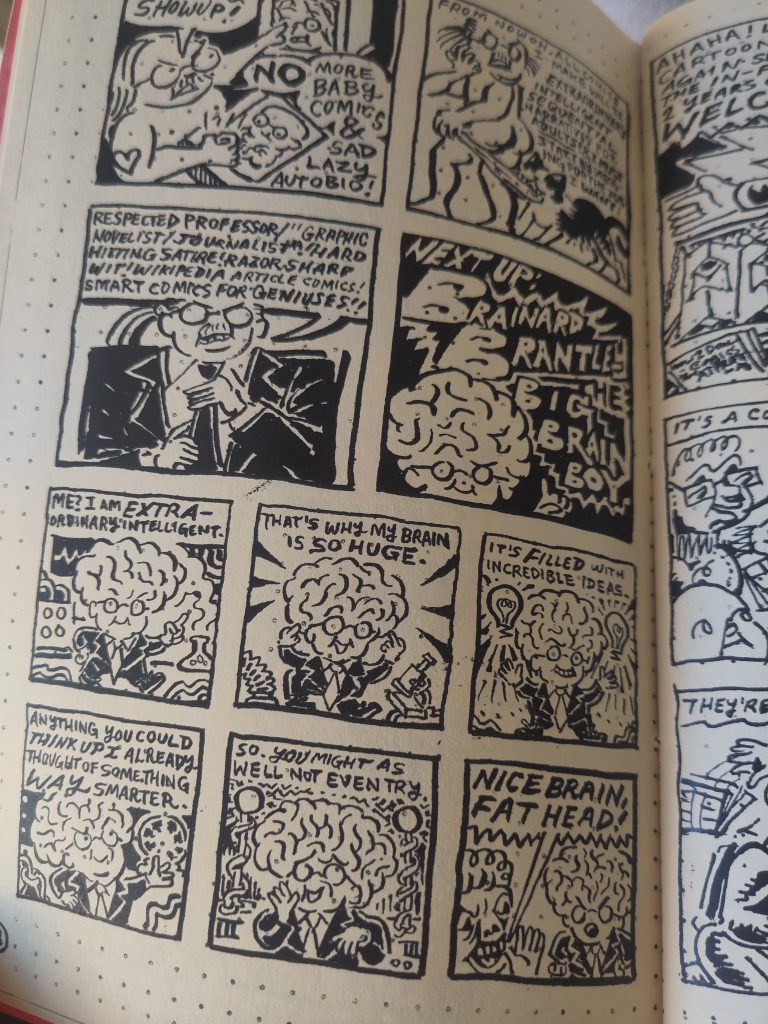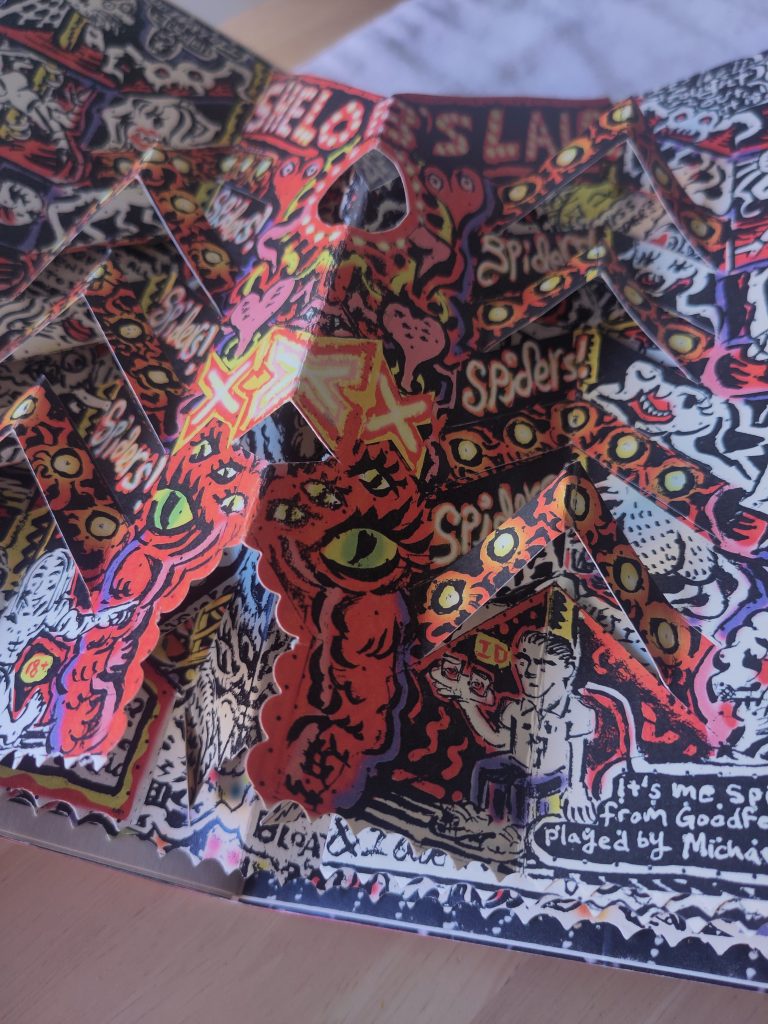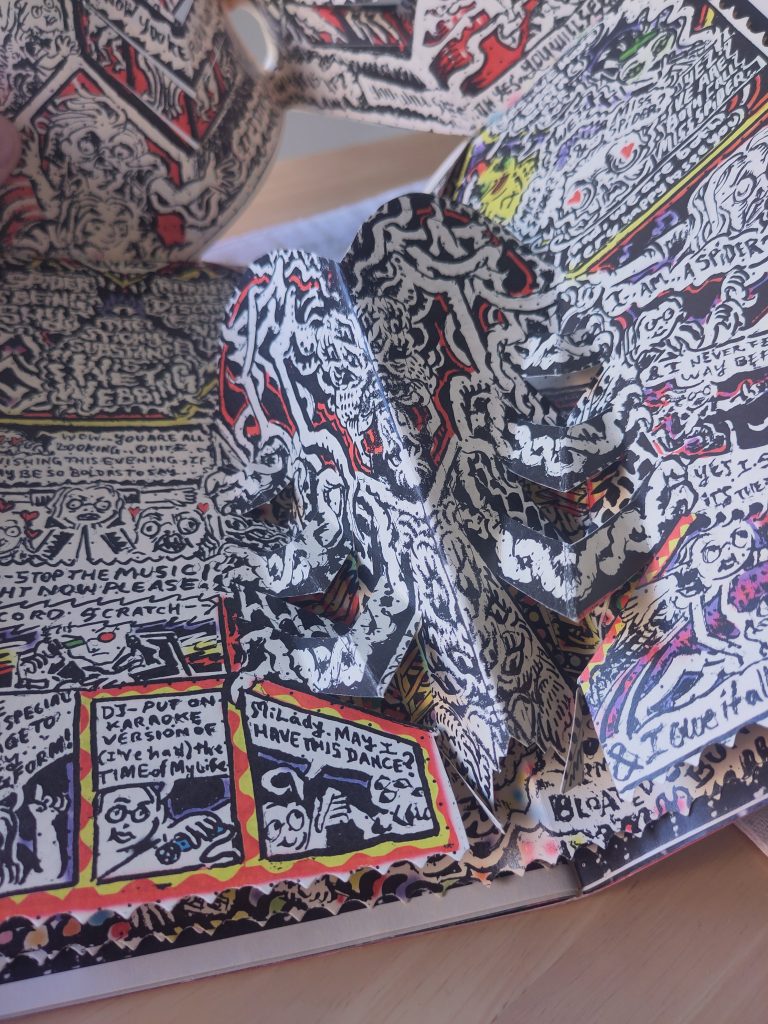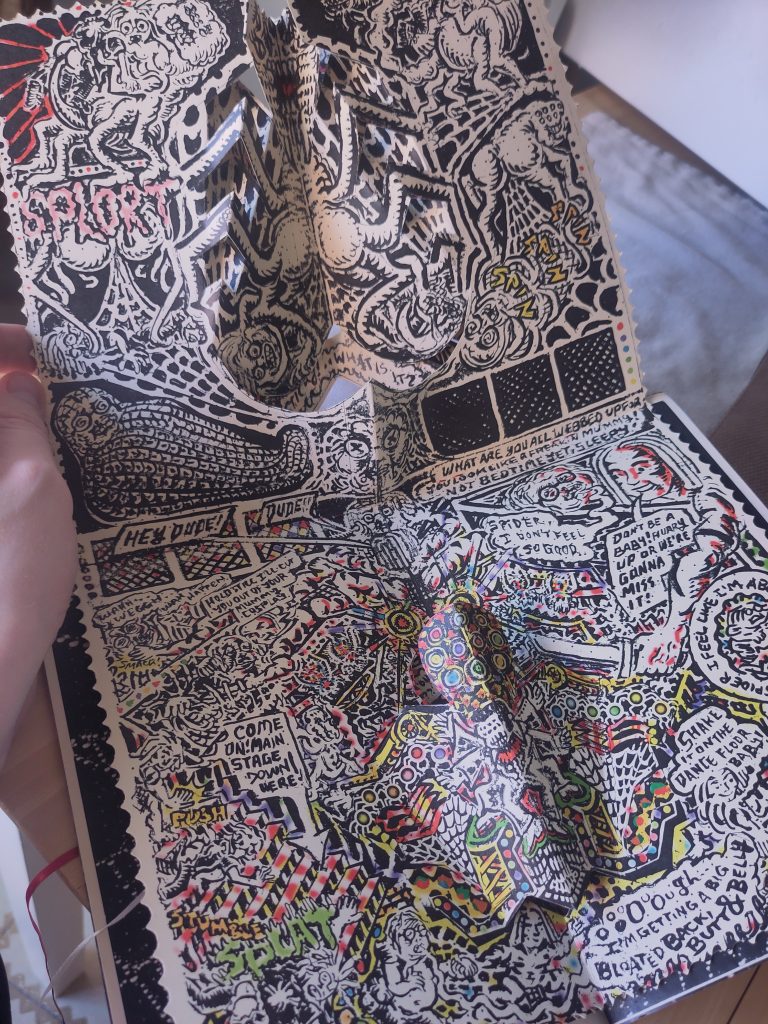Dot Comics #1 is a self-published anthology of work from New York-based A.T. Pratt, an artist who has been producing work for around a decade now. The book (called a “flatso” by the Pratt’s avatar on the back cover) feels homemade, but it has details that speak volumes about the care the artist has over his work: the use of sturdy matte paper; hand-stitched binding; a ribbon book closure. The title is due to the fact that the work is drawn on dot paper, though these are hard to spot, as the backgrounds are often colored in or filled in with images.

Time does weird things in the comics of A.T. Pratt. Or perhaps A.T. does weird things to time. The first batch of stories are various self-proclaimed failures of Pratt attempting the hourly comic challenges, whereby cartoonists attempt a panel an hour for a day. Pratt instead ends up drawing a page an hour, an effort his cartoon avatar knows is impossible to sustain. He’s trying to depict his thoughts in real-time, and the comics feel like as much of a stream of consciousness as the medium could do. The immediacy of the prose (often with puns, and misspellings, some of which are difficult to decipher) is matched with an anarchic, dense line and plethora of detail. The text and the images often seem to exist within the same plane; the characters of the text demanding their own space and special attention. Even amongst the anarchy apparent on the page, the cartooning remains legible and expressive. Even when the story disappears down riddles and absurdity, a feeling remains.
Dot Comics #1 is not an autobio comic that is particularly interested in anything outside of the world that is created on the page. In one of the first strips, Pratt preemptively mocks what would be an attempt for the comic to look behind itself, satirizing a ‘serious’ artist, one who is wearing a suit, and who proclaims that they will make comics that “will be extraordinarily intelligent sequential narratives for adults!” One real-world feature that does make an appearance here and is also included in other work from Pratt is the artist’s pet cat, Pandora, who, here, is given a sort of origin story of her own, and does, it has to be said, seem very lovable.

Given that the strips in this collection seem concerned with identity and purpose, readers may well be drawn to perform a bit of pop psychology. A few, such as ‘Pony Man’ and ‘Spider’ play on superhero origins stories and quickly descend into chaos. Usually, it is an audience or authority figure that brings the would-be hero back to earth – and an early grave. There’s also a preoccupation within these pages about credibility and believability, and about being able to impress a crowd. The meta-commentary of a TV interviewer describing the work as “sketchbook crap” reinforces this impression.
Pratt is best known for his origami pop-ups, and while Dot Comics #1 is indeed a “flatso”, insofar as it folds and can stand on a bookshelf, it comes with a pop-up insert in the centerfold. The fold-out, a collaboration between Pratt and Steven Christie and Lacey Smith, comes in the middle of the aforementioned Spider story and is itself an impressive, four-layered physical recreation of a spider. Each layer can be pulled up and out, which brings us deeper inside the body of the creature, and also a new level of the Spider-world.

Aside from the cover, this is the most colorful part of the book. The reds and yellows, somewhat muted, add a warm, even hellish texture to the most frantic cartooning in the whole of Dot #1.
At this point, though, keeping up with the story is a fool’s errand. We find here an absurdist riff on Dante’s inferno set within a New York nightclub at 5 a.m. I can just about make out that the protagonist is excited to find the monster Shelob, a Lord of the Rings reference, and that Spiderman makes a brief appearance, while the DJ plays a dubstep remix of ‘Itsy Bitsy Spider’. I can also tell that the protagonist’s run-in with Shelob doesn’t turn out well for him.
Playing around with the folds and finding all the corners and details in this work provides a lot of the fun. By itself, the story is weird enough to be entertaining but not necessarily gripping, or much of a deviation from the absurdist, gross-out superhero mockery that is present in many underground comics.

What is surprising here is the way Pratt uses the page, takes scissors to it, and rebuilds it, to make it a space that has to be traversed. I’ve written previously for SOLRAD about comics that utilize collage, folds, and origami to induce “distracted perception,” a type of storytelling technique that recreates the distractedness of modern life for the sake of new types of stories that suit that life. Dot Comics #1 surprises you and invites you to play with it. It is humorous and also silly and odd, and very charming. A.T. Pratt describes himself as a “master of horror”, and like with all good horror, it is hard to look away.
SOLRAD is made possible by the generous donations of readers like you. Support our Patreon campaign, or make a tax-deductible donation to our publisher, Fieldmouse Press, today.

Leave a Reply